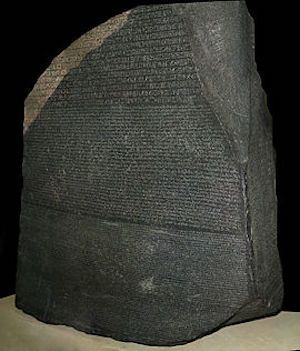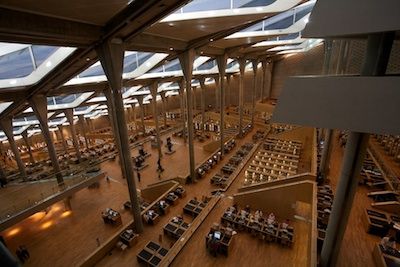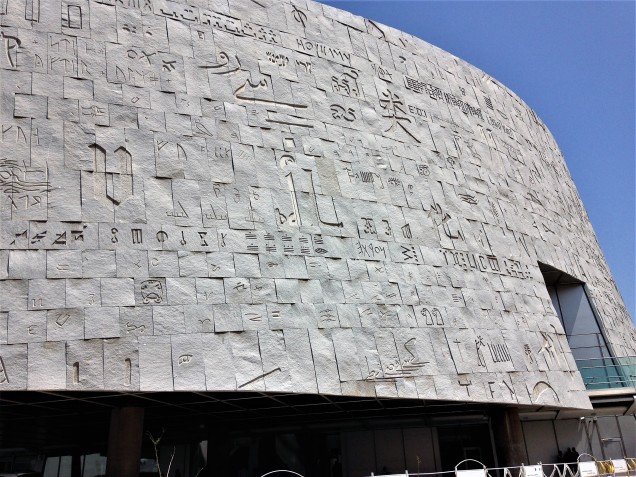1) The ancient library of Alexandria was founded by Demetrius of Phaleon, an Athenian politician who fell from power and fled to Egypt. There, he found refuge at the royal court of King Ptolemy I Soter, who ruled Egypt between 323 and 285 BCE. Impressed by the extensive knowledge and deep learning of Demetrius, Ptolemy assigned him the task of creating a library.
2) The ancient library of Alexandria was part of an institution of higher learning known as the Alexandrian Museum. The library was intended as a resource for the scholars who did research at the Museum.
3) The books at the library were divided into the following subjects: rhetoric, law, epic, tragedy, comedy, lyric poetry, history, medicine, mathematics, natural science, and miscellaneous. The library is believed to have housed between 200,000 and 700,000 books, divided between two library branches.
4) Book were acquired for the library through purchases at Athens and Rhodes, the two main book markets in the Ancient Mediterranean; through copying; and through confiscation.
5) One category of acquired books was called “from the ships.” Whenever a ship arrived at the harbor in Alexandria, government officials went aboard, searching for books. They brought the books they found to the library for inspection. These books were either returned immediately, or confiscated and replaced with a copy made by the library scribes.

The Rosetta Stone, created in 196 B.C.E. in Egypt and contains writing in Greek, Egyptian hieroglyphics, and Egyptian demotic script. Source: Wikipedia.
6) Books at the ancient library of Alexandria were mainly written in two languages—Greek and Egyptian, a now extinct Afro-Asian language. It is believed that the entire literary corpus of Ancient Greece was kept at the library, together with works by Aristotle, Sophocles, and Euripides, among others. The Egyptian books were books about the traditions and history of Ancient Egypt.
7) Scholars working at the Alexandrian Museum used the library to create the categorization of Ancient Egypt’s history into 30 dynasties, which is still used today when we study ancient history, as well as the first translation of the Hebrew Bible, known as the Septuagint. To this day, the Septuagint remains a crucial text in critical Bible studies.
8) The ancient library of Alexandria was destroyed on two different occasions. The original library branch was located at the royal palace at Alexandria, near the harbor. When Julius Caesar intervened in the civil war between Cleopatra and Ptolemy XIII, Caesar set fire to the ships in the harbor. It is believed that this fire spread to the library and completely destroyed it.
9) The second branch of the library was located inside a temple dedicated to the god Serapis. In 391 CE, Roman Emperor Theodosius declared Christianity the only legal religion of Rome, and ordered all pagan temples to be destroyed. The temple of Serapis at Alexandria was completely destroyed, and with it the second branch of the library.
10) In 2002, the Bibliotheca Alexandrina opened in Alexandria. The Bibliotheca Alexandrina is a research library and cultural center created in commemoration of the ancient library with the intention of making Alexandria into a city of world-renowned learning again. The Bibliotheca Alexandrina houses the world’s largest digital collection of historical manuscripts as well as the largest repository of French books on the African continent.

I wasn’t much of a history buff as a kid, but the Great Library of Alexandria caught my imagination at a certain point in my childhood. Public and school libraries were important places for me, so I imagined the Great Library of Alexandria as something between a fairytale palace full of treasure rooms, each filled with more glittering rarities than the last, and the high-ceilinged, wood-panelled library at Van Nuys Junior High School.
The Biblioteca Alexandrina was opened in late 2002. When I saw the photos and read about the vast ceiling, sloped towards the Mediterranean and with specially designed windows that let light flood in without admitting any rays that could damage the books, I felt my imagination stirred exactly as it was decades earlier. But now the place was real. Someday, perhaps, I could see it.
As we walked towards the library this morning, I stopped to take pictures of wall art near the library complex.
The library’s plaza-like entrance invites the visitor to approach (despite the necessary security gates), and the entire structure slopes towards the Mediterranean, as if connecting the vast repository of human knowledge within to the world beyond the glittering sea.
When you first enter the library’s reading room, you really feel the power of the design. The vast space before you indicates wordlessly the immensity of human knowledge. Below the shelter of the sloping ceiling with its light wells, a series of terraces cascades hundreds of feet downward, each terrace holding a separate collection of books and rows of beautiful wooden tables and chairs for the people who come to read and study.

Within the vastness, the space available for reading, research and computer use feels intimate and comfortable. It’s just as I’ve always felt in the libraries I’ve loved most, when I take my chosen books to a table, and settle down for a couple of hours of reading pleasure.
There’s plenty of art in the library space, and many pieces are both beautiful and imaginative. We loved the bench that’s shaped like an open book, inscribed with several Shakespeare sonnets (including Sonnet No. 12). I also admired the busts of famous Egyptian writers.
It was after we left the building and went walking around the library that I got the sense of grandeur and grace I know the architects intended for the building’s exterior. I love the outside walls of the library, inscribed with many different scripts, both ancient and modern.

We ended our outing in the usual way: at a local coffee shop, sipping our drinks and watching people talking, laughing, smoking and passing the time, just as they have in Alexandria coffee shops for more than 200 years.







Comments
Post a Comment